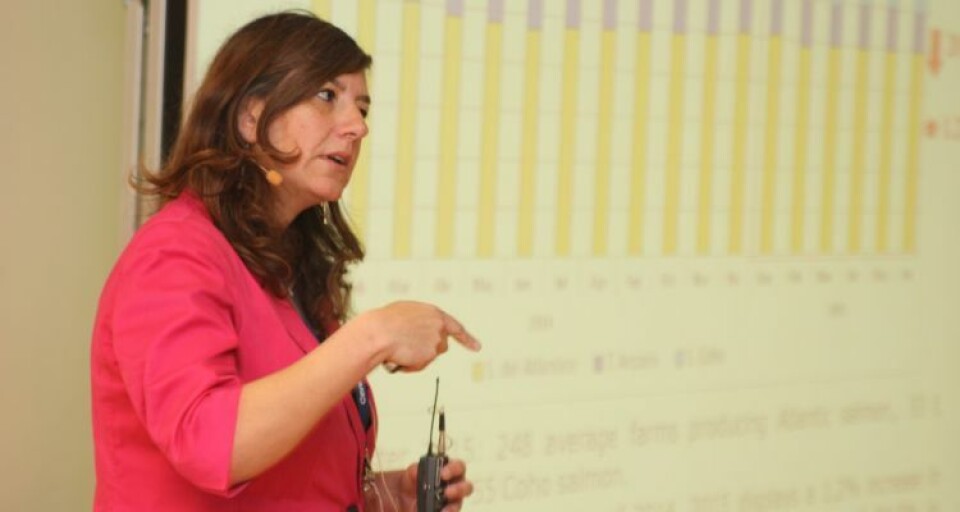
Chilean salmon farmers on alert for HAB resurgence
The levels of a toxic microalgae that caused the death of 360 tonnes of salmon in the Aysen region of Chile earlier this month seem to have down, but the aquaculture industry is prepared for a recurrence.
Alicia Gallardo, deputy director of aquaculture at Chile's fish and aquaculture agency, Sernapesca, told Fish Farming Expert's Chilean sister site, Salmon Expert, that both the private and public sector are prepared for more harmful algal blooms after learning lessons from the resurgence in HABs that took place two years ago, which cost Chile millions.
Sernapesca now receives daily reports of microalgae measurements, which show that the concentrations of Alexandrium catenella are at a density in the water that is on the verge of killing salmon, about 300 cells per millilitre of water.
Coordination of logistics
In the areas where in mid-January 360 tonnes of salmon died due to algae, concentrations of up to 5,584 cells per ml were measured.
"All farmers monitor the concentration of all types of microalgae, after the algal blooms, which was also from the genus Chattonella, early in 2016," said Gallardo.
She says that when a dangerous concentration of algae is detected they have contingency plans to implement regional meetings, coordination of logistics and cooperation with the Navy immediately.
Sernapesca's regional team in Aysen met all the holders of the affected farms last week, and an emergency plan between public-private sector was activated.
Red Tide
"We are awake and have enabled preventive measures to prevent mortality. We move fish to keep them away from the area where we see blooms, and if an acute event happens, we are ready with the necessary logistics," Gallardo said.
Back in 2016 the Chilean salmon industry was hit hard by the "Red Tide" algal blooms. In March that year, about 25 million fish with an average weight of 2 kg died due to algal bloom in the Los Lagos region. Had these fish survived to grow to harvest weight it would have given rise to 100,000 tonnes of fish, a volume greater than Scotland's entire annual output.
After "Red Tide" it was speculated that the dumping of dead fish in the sea might have caused the bloom.
Antibiotic-free
Meanwhile, Marine Harvest's farm at Yaotal in central Chiloé, Los Lagos, has become the first Atlantic salmon farm in Chile to gain antibiotic-free status, which certifies that harvested fish were not treated with anti-microbials during the sea-farming phase.
Gallardo highlighted the importance of this milestone "given that it joins several other centers of cohos - approximately 50% of the centers of coho have this certificate - and other centres of the Magallanes region", which are in line with the public body in relation to the decrease in the use of antibiotics in the salmon farming industry.
According to Gallardo, certification is voluntary and companies can access it upon request. It involved a background check and on-site inspection, a process that has certified 39 sites in the Los Lagos region since its implementation.























































